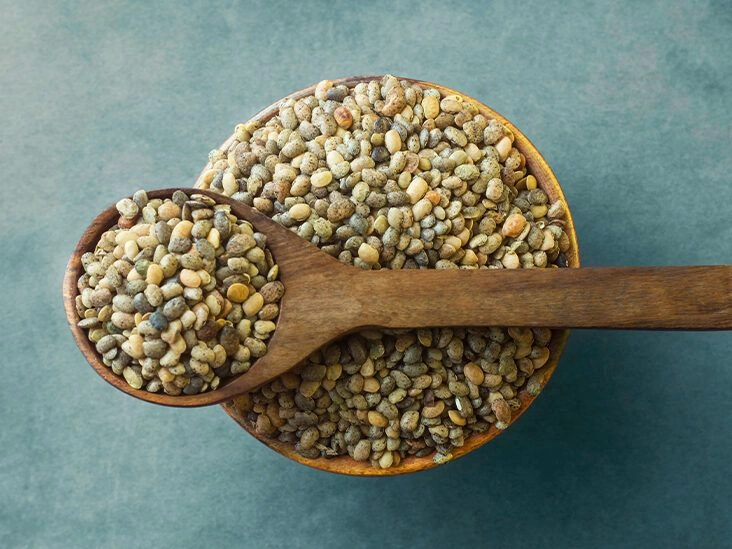Renowned for its characteristic flavor and firm texture, horse gram is a commonly used legume across various culinary traditions.
It is also prized for its notable nutrient composition and therapeutic uses.
Indeed, some proponents claim this potent legume can aid in weight reduction and help address a range of health issues.
This article explores the advantages and possible adverse effects of horse gram and examines practical ways to incorporate it into your diet.

What is horse gram?
Horse gram, botanically known as Macrotyloma uniflorum, is a legume native to parts of South and Southeast Asia.
Recognized for its hard, dry grains and distinctive taste and aroma, horse gram is a dietary staple in several regions.
The seeds are commonly sprouted, boiled, or fried and used in many preparations.
It is particularly popular in India and is also used in cuisines of countries such as Malaysia and Sri Lanka.
Traditionally, it has been employed in folk medicine for conditions like fever, infections, hemorrhoids, and kidney stones.
summaryHorse gram is a legume from South/Southeast Asia, used both culinarily and medicinally for various ailments.
Benefits
Horse gram has been linked with multiple health benefits, including supporting cardiovascular health and aiding in weight control.
High in essential nutrients
Horse gram supplies many vital nutrients.
Similar to other legumes, it is particularly rich in protein and fiber, both of which may help regulate blood sugar and reduce hunger.
It also offers several important vitamins and minerals, such as iron, phosphorus, and vitamin C.
Iron contributes to oxygen transport and DNA synthesis, while vitamin C is key for immune defense and skin integrity.
Phosphorus, meanwhile, is important for bone and tooth structure and is required for energy metabolism and muscle performance.
May support weight loss
Horse gram contains substantial amounts of fiber and protein, two nutrients that are important for weight management.
Notably, a review of 28 studies linked higher legume consumption to a reduced risk of obesity, implying legumes like horse gram could aid weight control.
Although direct human data are scarce, several animal studies indicate horse gram might assist weight reduction.
For instance, one experiment gave rats extracts from horse gram leaves and seeds while on a high-fat diet and observed protection against weight gain.
Another animal trial reported that rats receiving horse gram extract for 5 weeks had a notable decrease in body weight.
Additionally, a study found that horse gram extract lowered both body weight and food intake in obese rats (11).
Keep in mind these investigations used concentrated extracts in animals. More human trials are necessary to confirm effects in people.
May benefit heart health
Some research suggests horse gram could support heart health and lower several cardiovascular risk factors.
In a 5-week study on hypercholesterolemic rats, horse gram extract lowered total cholesterol, LDL (bad) cholesterol, and triglyceride levels — all markers linked to increased heart disease risk.
Other animal studies indicate horse gram and its constituents may reduce inflammatory markers, which can play a role in chronic illnesses like heart disease.
Moreover, observational human research associates greater legume consumption with a reduced risk of heart disease.
Nevertheless, additional human studies are required to draw firmer conclusions.
summaryHorse gram is nutrient-dense, offering protein and fiber. Preliminary research suggests possible benefits for weight control and heart health, but more human data are needed.
Potential side effects
While horse gram is nutritious and linked to several perks, there are a few possible drawbacks to be aware of.
First, horse gram contains carbohydrates known as raffinose oligosaccharides, which can cause gas and bloating during digestion, particularly when consumed in large quantities.
Occasional allergic reactions to horse gram have also been documented.
In addition, horse gram contains antinutrients such as phytic acid, which can hinder absorption of certain minerals.
However, methods like cooking, soaking, and sprouting the seeds before eating can substantially reduce phytic acid levels and improve mineral uptake.
summaryHorse gram can trigger gas and bloating in some people and may cause allergies. It also has phytic acid, though its levels drop with soaking, sprouting, or cooking.
How to use horse gram
Horse gram is used in many dishes because of its particular taste and hearty texture.
It commonly appears in soups, stir-fries, curries, and dals.
Most preparations call for soaking or sprouting the seeds prior to boiling or pressure cooking and adding spices.
The seeds are sometimes roasted, blended with herbs and spices, and ground into a powder to sprinkle over rice.
summaryHorse gram is versatile in the kitchen. Seeds are generally soaked or sprouted, then boiled, pressure-cooked, or roasted for various recipes.
The bottom line
Horse gram is a nutrient-rich legume commonly used in many South and Southeast Asian cuisines.
Although human research is limited, animal studies suggest horse gram might aid in weight reduction and support cardiovascular health.
It can cause gas and bloating in some people because of certain carbohydrates, and it contains phytic acid which can reduce mineral absorption; however, soaking, sprouting, or cooking the seeds can lower phytic acid levels.
Horse gram can be prepared in numerous ways and enjoyed in soups, curries, stir-fries, and more.


















Leave a Reply
You must be logged in to post a comment.